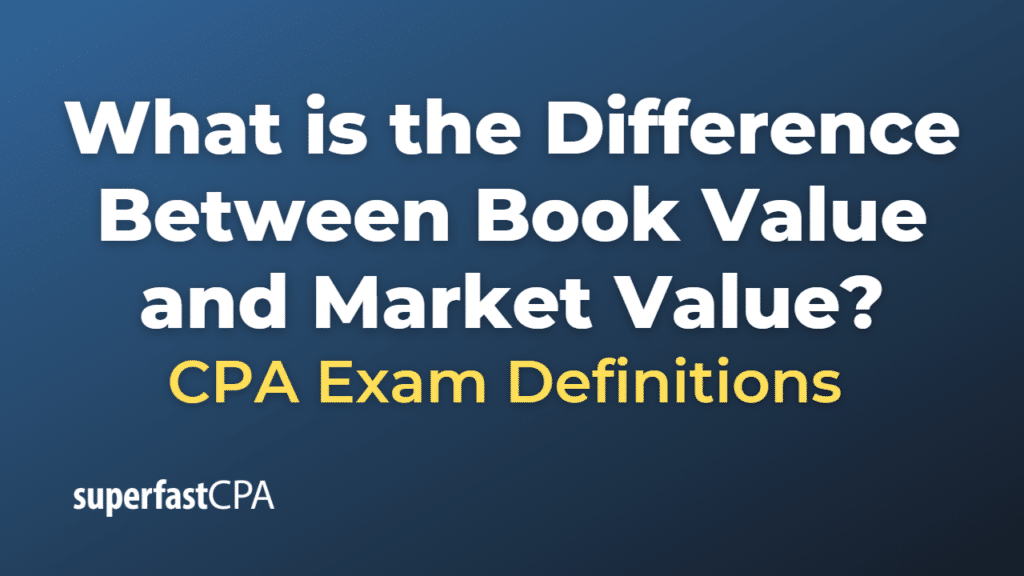Difference Between Book Value and Market Value
Book value and market value are two different ways of valuing a company or its assets, and they serve different purposes:
- Book Value: This refers to the value of an asset or a company as recorded on the balance sheet, based on the original cost of the asset, less any accumulated depreciation, amortization, or impairment costs. For a company, the book value is calculated as the company’s total assets minus intangible assets (like patents, goodwill) and liabilities. It’s essentially the value of the company’s net assets if they were liquidated at their balance sheet values.
- Market Value: This refers to the current or prevailing price of an asset or a company in the marketplace. For a publicly traded company, the market value (or market capitalization) is calculated by multiplying the current stock price by the number of outstanding shares. The market value reflects what investors are currently willing to pay for a share of the company’s stock, and it can fluctuate based on supply and demand dynamics in the market.
In general, the book value is an accounting value based on historical cost, while the market value is a forward-looking, dynamic value based on investor perception and market conditions. If the market value significantly exceeds the book value, it often means investors expect the company to have high earnings growth in the future. Conversely, if the book value exceeds the market value, it could indicate that the market has a pessimistic view of the company’s future, or it could mean that the company’s assets are undervalued by the market.
Example of the Difference Between Book Value and Market Value
Let’s consider a hypothetical example of a company, “TechFusion Corp.”, which is publicly traded in the stock market.
Book Value:
According to TechFusion’s balance sheet, the company has total assets of $10 million, intangible assets of $2 million, and total liabilities of $4 million.
The book value of TechFusion can be calculated by subtracting intangible assets and liabilities from the total assets. So, Book Value = Total Assets – Intangible Assets – Liabilities = $10 million – $2 million – $4 million = $4 million.
Market Value:
Now, let’s say TechFusion Corp. has 1 million shares outstanding, and the current market price per share is $15.
The market value (or market capitalization) of TechFusion can be calculated by multiplying the number of outstanding shares by the current market price per share. So, Market Value = Number of Shares x Market Price per Share = 1 million x $15 = $15 million.
In this example, the market value of TechFusion Corp. ($15 million) is significantly higher than its book value ($4 million). This discrepancy might be due to several factors such as future growth expectations, the reputation of the company, market sentiment, and other factors not reflected on the balance sheet.













